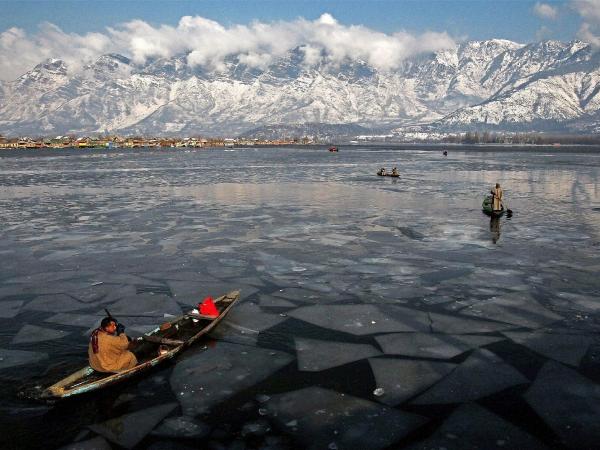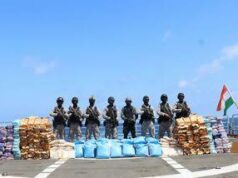Balakot 2019, Kashmir 2020

From 1989 onwards, Pakistan unleashed a hybrid war on India , over Kashmir , as the core strategy to liberate the State. It also exploited its ambiguous nuclear status in the post-Cold War period, to keep the Indian State in a bind , as during this period nuclear strategies were in a state of flux.
Pakistan’s intent was the long-term emasculation of New Delhi’s resistance and attempt to pressurize India by internationalising the issue — the Simla Agreement’s provision notwithstanding , bilateralism was never respected by Islamabad. From 1998 onwards, when both nations became overtly nuclear-armed, Pakistan become bolder — Kargil 1999 and the attack on Parliament in 2001 seemed to be based on the assumption that the nuclear overhang had closed the window for an effective conventional Indian response.
The decision not to cross the LoC in 1999, taken for completely different reasons by the Vajpayee government, and the long standoff of 2002 (Operation Parakram) appeared to substantiate India’s reluctance. Seven years later, the Mumbai terror attack, too, made Indian reluctance to execute hot pursuit more evident.
Pakistan’s deep state as usual did not hesitate in executing the Pulwama attack. It clearly assessed that unless it could sponsor a spectacular terror-related event in Kashmir by early 2019, the comprehensive Indian approach towards conflict management initiated since 2017 could effectively prevent it from further calibration of the situation in Kashmir. An element of irrationality continued to remain a part of Pakistan’s policy. It is important to revisit Pakistan’s 30-year-old strategy to determine why it suddenly felt insecure and hesitant from 2016 onwards.
The chain of events in Kashmir and part of the Indian counter-strategy, which appeared to unnerve Pakistan’s deep state, need to be reviewed to get the right perspective.
The nature of the proxy, hybrid conflict started to change from 2013 onwards when a generational transition in local terror content was apparent. Burhan Wani and his cohorts were reluctant to listen to, and were less under the control of, elements from across the LoC. As its big ticket capability waned, Pakistan’s deep state panicked. In addition, there was a sudden change in the stance of the Indian government in mid-2015. The deep state has never been comfortable with talks and did not support Nawaz Sharif. In 2016, it conducted the Pathankot attack in India’s hinterland and in September that year, the Uri attack close to the LoC. The year ended with the Nagrota terror attack.
The year 2016 turned out to be decisive and saw a change in the nature and dynamics of hybrid conflict in J&K. The Indian government responded in a graduated way — activity at the LoC increased, followed by the surgical strikes in September 2016 post the Uri attack. The strikes were essentially experimental but provided sufficient inputs to strategise beyond just the tactical level. The perception of a lack of Indian response below the nuclear threshold was effectively breached.
In 2016-17, while the deep state succeeded in bringing mobs to the streets, the Indian government was bold about upping the ante in its counter-terrorist strategy. While Operation All Out was launched to neutralise attempts at increasing the terror footprint, the less visible but extremely effective measures were those that targeted the Pakistan-sponsored ecosystem. This ecosystem comprising a combination of human resources such as over ground workers (OGWs), ideologues and separatists, had permeated the very core of Kashmir. Combined with complex financial networks and an effective communication strategy evolved by Pakistan’s Inter State Public Relations (ISPR), it had matured over time. It was given space to function by the persistent Indian strategy to primarily count upon physical neutralisation of terror groups, limiting infiltration and preventing fresh local recruitment, which became rife after 2013.
Most countries have followed this model when facing similar problems as India’s. However, the new Indian strategy from 2017 surprised Pakistan. It took some time for Pakistan to realise how subtly this change had taken place, even as the Indian Army went on the kinetic offensive re-adopting some of its practices from the Nineties. By the end of 2018, Pakistan was already on the grey list of the Financial Action Task Force (FATF). The Indian National Investigation Agency (NIA) was succeeding in dismantling financial networks and the separatists had become increasingly irrelevant. With the Indian general elections then scheduled for March-April 2019, the deep state assessed that a terror-related event could, with some effort, be branded a “false flag” operation. This assumption came on grounds that the Narendra Modi government would seek a return to office on the back of nationalist fervour generated by Pulwama. The Balakot-type response 12 days later was unexpected, but demonstrated political will, military escalation control and a willingness to engage internationally to neutralise Pakistani propaganda.
The international support that Balakot garnered, the run of military success against terrorist cadres post Pulwama-Balakot and the added political stability at the Centre gave the Indian government the confidence to execute long-awaited political initiatives. Pakistan’s attempt to gain greater relevance in Afghanistan through the US and President Donald Trump’s ill-informed offer to mediate on J&K, acted as triggers for the decisions of August 5, 2019 — to rescind the special constitutional provisions for J&K.
With a communication lockdown, the political community under strictures and the ecosystem under progressive neutralisation, the time since has seen Pakistan relatively ineffective in the conduct of hybrid war. Now with FATF unrelenting on Pakistan to do more to dismantle the terror infrastructure, an economy which is causing major concern, and the focus shifting to the management of the US interests in Afghanistan, Pakistan finds itself in a dilemma. Internal demands to wind up terror networks are increasing.
All this may point towards Pakistan adopting a more rational course in J&K and preventing situations which it will clearly be in no position to handle. Much depends on the nature of the Afghanistan deal and the extent of Pakistan’s involvement. The expectation that the summer of 2020 in J&K will yet be stable may be right but predictions about J&K and applying rationality to Pakistan’s actions may not always be the correct approach. India must maintain a tight control, prevent the ecosystem’s potential for revamp and remain prepared for all eventualities. The summer of 2020 will be a major decider about the future course of the J&K proxy conflict.



